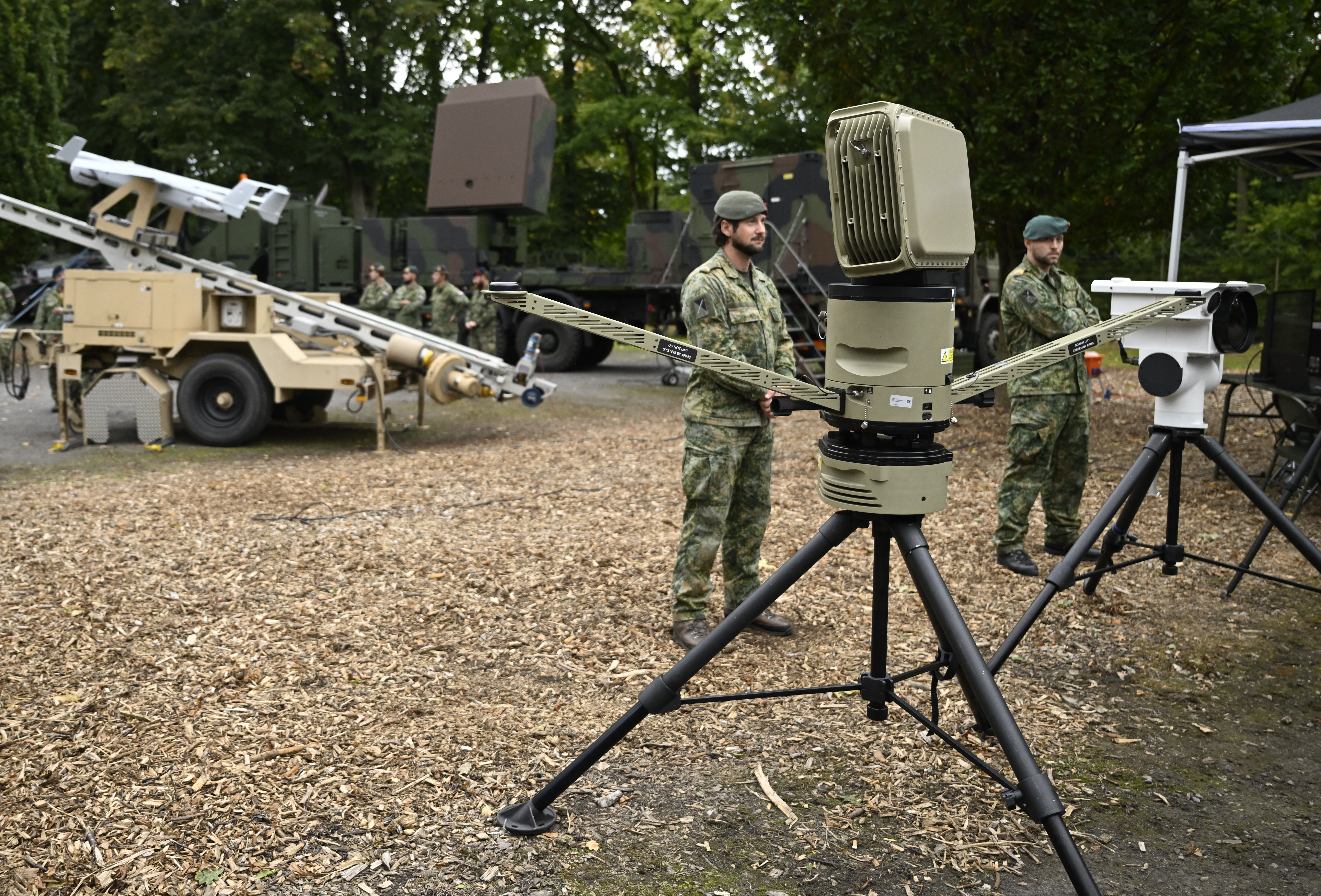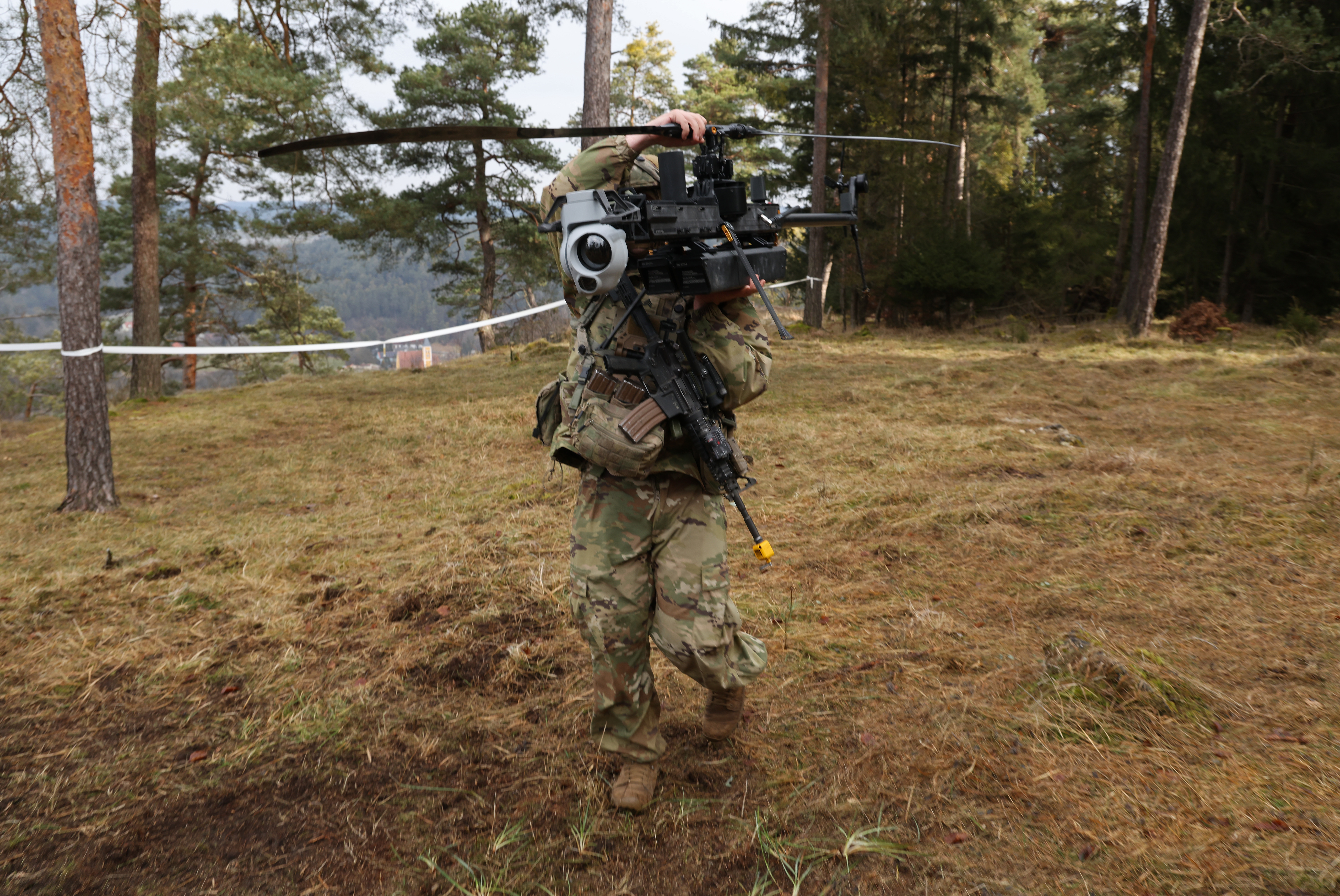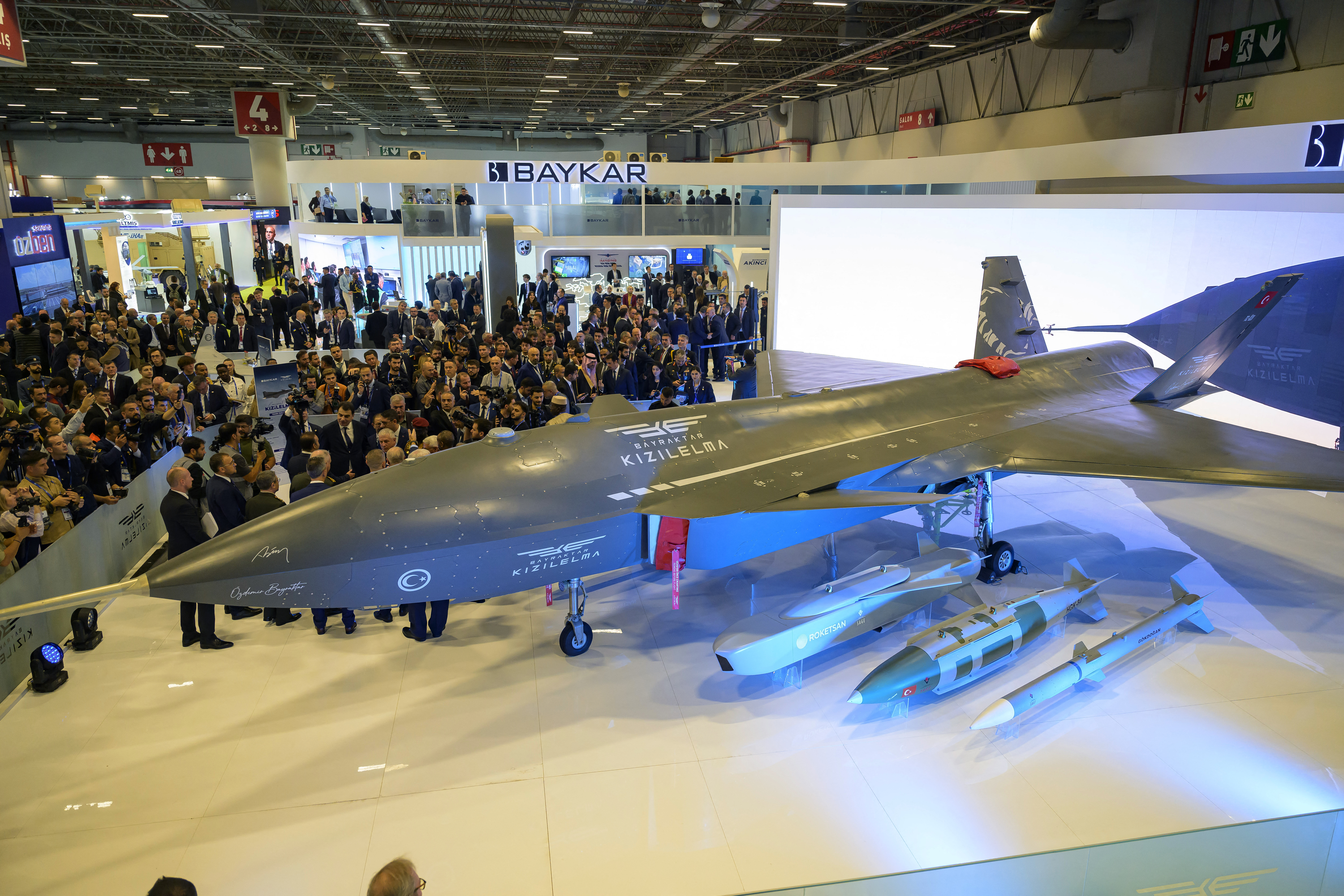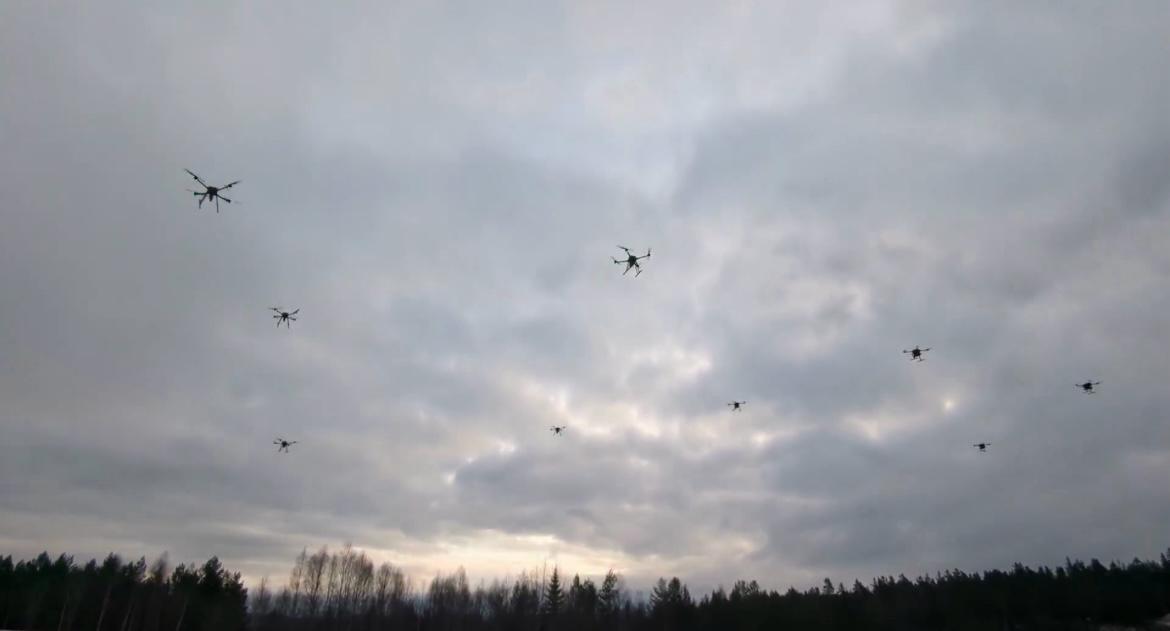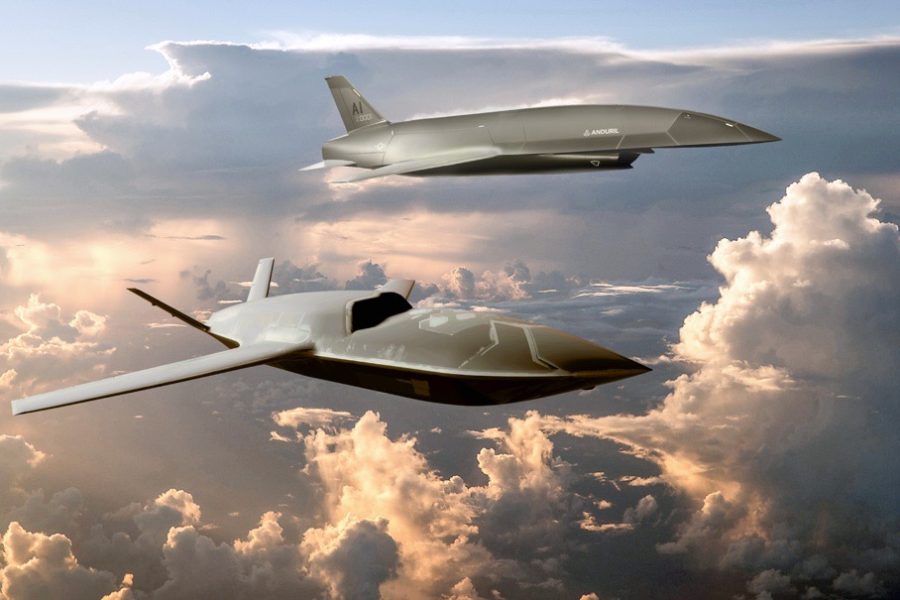
At least one, and possibly both, of the Air Force’s Collaborative Combat Aircraft prototypes is expected to fly in the coming days, sources told Air & Space Forces Magazine, beginning a flight test and evaluation program leading to production contracts sometime in fiscal 2026.
Anduril Industries’ YQ-44A Fury and General Atomics’ YFQ-42A are both “basically ready to go,” a Pentagon official said.
“I would be surprised if they do not fly” the week of Aug. 18, he said Aug. 22. The two wingman drone prototypes have been in ground testing since May, and have undergone outside engine-on tests and taxi tests, he said. The Air Force has previously said it expected the jets to fly this summer, which technically ends Sept. 22.
Anduril’s airplane will fly out of Southern California Logistics Airport—formerly George Air Force Base—north of Los Angeles.
General Atomics is testing its aircraft out of the Gray Butte Airport, which it owns, midway between the Southern California Logistics Airport and Edwards Air Force Base, California. General Atomics has used the facility to test many different uncrewed aircraft since the early 2000s, including the MQ-1 Predator, MQ-9 Reaper, and the MQ-20 Avenger.
Industry officials said the Air Force plans to announce the flight or flights, and noted it’s possible the service may wait for both to fly before publicizing the events—although the Pentagon official said it would be “hard to hide” whichever one goes first. Press is not expected to be allowed at either site to record the first flights.
The Air Force declined to comment on the timing of CCA flight testing.
Industry sources said they expect the two companies will be allowed to issue detailed imagery and video of the flights shortly after they happen. Though the first flight of the secretive B-21 bomber in November 2023 was not announced ahead of time, photographers staked out Air Force Plant 42 in Palmdale, California, days in advance to capture the event. Those photos remain more detailed than anything the Air Force has released of the B-21 flying since it debuted.
It’s unclear if the CCAs will fly most of their evaluations out of their respective company locations, or from nearby Edwards.
The two aircraft constitute the first increment of the CCA program, which senior Air Force leaders have said will encompass at least three phases, and likely more. While the service was expected to lay out its requirements for Increment 2 in the spring, it has not yet officially done so. It’s still unclear whether the Air Force wants that aircraft to be more or less capable than Increment 1; service officials have indicated it could go either way.
Increment 1, however, is dedicated to enabling air superiority. The pilots of F-22s and F-35s will be able to designate targets for missiles carried by CCAs on their wing, thus multiplying the number of shots the team can take on a single mission. In the early stages of the CCA program, the pilots of F-22s and F-35s said they needed the ability to shoot more missiles than the internal weapons bays of their fighters could carry. Both can carry more missiles externally, but that compromises their stealth characteristics.
The CCA program has been described as providing the Air Force with “affordable mass” in large air battles with a peer adversary. Each drone is expected to cost around $30 million apiece, while a new F-35A costs upwards of $90 million.
Subsequent increments could take on ground attack, suppression of enemy air defenses, electronic attack or other missions.
In its version of the fiscal year 2026 defense authorization bill, the House Armed Services Committee said it wants the Air Force to move forward with CCA “as soon as possible” following successful flight demonstrations. An amendment sponsored by Rep. Mike Turner (R-Ohio) said the HASC is “fully supportive” of the program, and directed Air Force Secretary Troy Meink to provide the service’s plans to begin full-scale production of the first CCA airframes.
Turner’s amendment said CCA offers one way to “accelerate affordable and rapid fielding of capable airpower mass,” and encouraged the service to continue embracing such initiatives. It also lauded the CCA program for advancing “from conceptual development to production and fielding of an operationally relevant capability” in only five years, while “leveraging technologically advanced contributions of an expanding industrial base.”
Just over a year ago, Brig. Gen. Jason Voorheis, program executive officer for fighters and advanced aircraft, said the Air Force plans to carry both contractors into the CCA production phase, but that there is no set minimum amount of work that each firm will be guaranteed.
At last year’s Life Cycle Industry Days gathering hosted by Air Force Materiel Command, Voorheis told reporters that CCA contracts will have “a lot of flexibility.” The two companies may not perform the same work, or on the same timetable, he said.
The intent, he noted, is to “create a sustained, competitive model that allows optionality to pick the most effective system and surge over time.” The threat and operational environment will determine production numbers and work share, he said. He also said that while Anduril and General Atomics are developing the CCAs, other companies may be able to compete to produce them.
The Air Force’s fiscal 2025 budget projected CCA funding would spike from $495 million in 2026 to $1.7 billion in fiscal 2027 and about $3.1 billion in both fiscal 2028 and 2029. The fiscal 2026 budget request, which does not include funding estimates for later years, revises that estimate to $804 million in the upcoming year. Congress provided $678 million of that in the one-time budget reconciliation package last month.
The Air Force has not yet nicknamed the two jets. Anduril continues to call its offering “Fury,” a name bestowed by the aircraft’s original developer, Blue Force Technologies, which Anduril acquired in 2023. While some call the General Atomics aircraft the “Gambit,” that nickname technically applies to GA’s concept of many different uncrewed aircraft with a common engine and chassis.
A company official said the CCA demonstrates “Gambit 2” of the four-part Gambit concept, whereas the company’s XQ-67A is an example of “Gambit 1.”
The Air Force plans to house and fly operational CCAs from Beale Air Force Base, California. The service has said it could buy as many as 1,000 of the drone wingmen to pair with advanced fighters.
The post Collaborative Combat Aircraft First Flights are Imminent, Sources Say appeared first on Air & Space Forces Magazine.

Air, Technology, Anduril, CCA, Collaborative Combat Aircraft, drones, General Atomics, YFQ-42, YQ-44A Fury
Air & Space Forces Magazine
[crypto-donation-box type=”tabular” show-coin=”all”]

